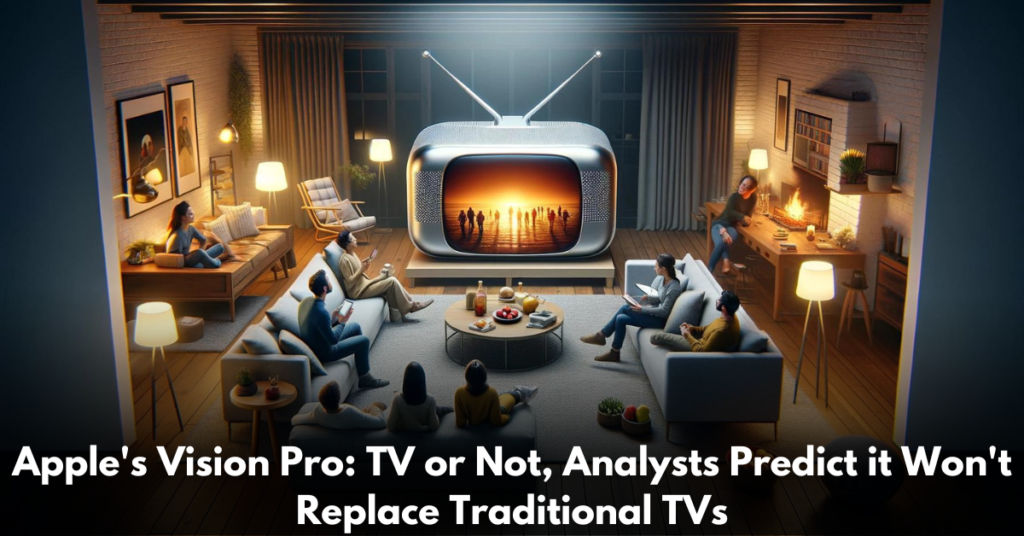Apple’s Vision Pro: TV or Not, Analysts Predict it Won’t Replace Traditional TVs
Apple’s Vision Pro is a content consumption device that can play games, do VR experiences, and mimic AR through impressive engineering. It has gained popularity as a solution for people who want to have a 100-plus-inch 4K HDR TV set without the need for wall space in their house. However, the Vision Pro is not expected to replace the TV anytime soon. Some argue that it will be a supplement, similar to the 3D TV that disappeared due to the lack of adoption by studios, TV channels, and sports organizations.
The Vision Pro is a 2D content consumption device, which will take time for Hollywood and the sports world to catch up. Instead of having a TV in every room, users can put on the Vision Pro and have the content follow them in a little corner of their vision while cooking meals, doing laundry, or shitposting online. The price of the Vision Pro starts at $3,499. This is the same price as approximately six 32-inch Samsung Frame TVs.
Comparing Apple’s Vision Pro to Traditional TVs
The Apple’s Vision Pro quality is probably better than the 32-inch Samsung TV’s, but the TV is accessible to everyone in the house and blends in with the wall like art. The other is a face-to-face computer that can be carried from room to room and isolates users from everyone around them. This isolation has given people pause, as others cannot enjoy Vision Pro’s content alongside them unless they have their own Vision Pro. The main barrier holding the Vision Pro from replacing TVs is not price or weight, but the lack of support for all the same media a TV can. Instead, it is the walled garden of a phone. To play the PS5, users would need to use Remote Play, hope for robust local area networks, and hope there is no heavy pixelation. The Vision Pro lacks HDMI ports, so users would be stuck with the same experience only on a virtual 105-inch TV.
Balancing Quality and Accessibility in Home Entertainment
Cloud gaming services, such as Xbox and other cloud gaming services, are subject to the same principles. Apple is notoriously against allowing cloud gaming on its iOS platform, and web apps must be employed. Many people prefer easy, fast, and affordable content consumption, and a $3,500 VR headset that is arguably as good as a $1,500 OLED TV will be a hard sell for the vast majority of people. Even when the price eventually comes down or the nearly as good but significantly cheaper Apple Vision is inevitably released, this thing won’t be replacing the TV in the majority of homes.



